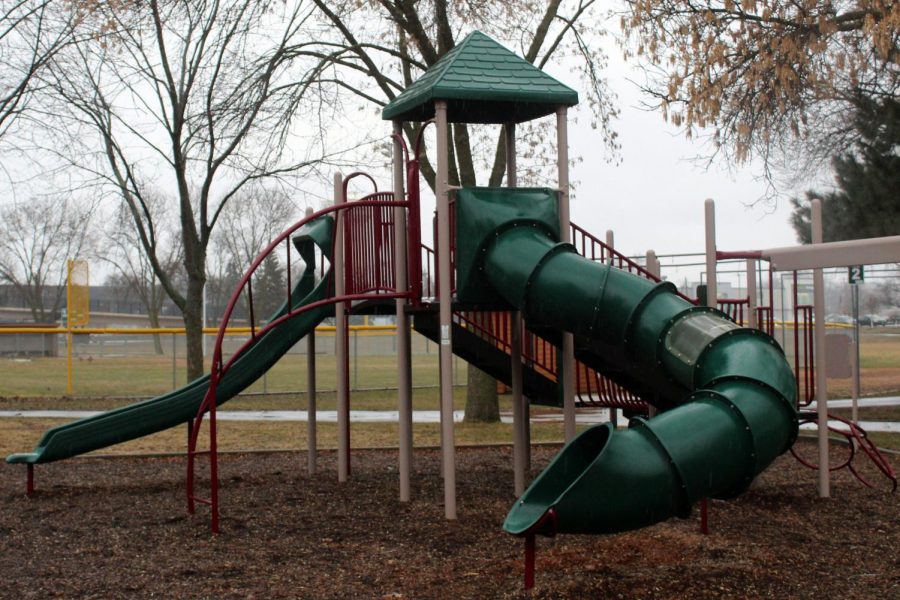Stay Safe Minnesota: Walz allows stay-at-home order to expire
Non-critical business to begin opening May 18
In a time of social distancing, playgrounds around Minnesota remain empty. Gov. Tim Walz announced May 13 that the stay-at-home order will be allowed to expire May 18 and will be replaced by a Stay Safe order. Walz also signed four Executive Orders aimed at reopening the economy safely.
May 13, 2020
Protecting public health and economic stability was at the forefront of Gov. Tim Walz’s mind as he signed four Executive Orders May 13 in the midst of the COVID-19 pandemic.
“We believe that we should be able to handle an increase in cases as more people move out and about. We can use what we’ve learned about the virus and how it spreads to inform our next steps. We can take a measured Minnesota approach that protects public health and economic stability,” Walz said.
In an address to the state May 13, Walz announced he would let the stay-at-home order expire May 18, but would be replacing it with a Stay Safe order. The Stay Safe order means Minnesotans should continue to limit trips outside their homes, but can begin gatherings of 10 people or less as long as social distancing is maintained.
In addition, Executive Order 20-56 allows non-critical businesses to reopen May 18 if they stay at less than 50% capacity and create a safety plan. These gradual steps toward reopening are not a guarantee that Minnesota will not have to go back to more severe limitations, according to Walz.
“It means clear measures for determining if and when we need to pull back,” Walz said. “We are not flipping a switch and everything is going back to normal at once, we are slowly moving the dial introducing more interaction between people over time.”
Executive Order 20-56 also allows other businesses including salons, barbershops, bars and restaurants to begin to open June 1 as long as cases don’t spike as restrictions begin to ease.
The expiration of the stay-at-home order is not an excuse to go be in close proximity with other people, according to Walz. In order to progress with the reopening plan, Minnesotans must continue to practice social distancing.
“A little over a month ago, our state received an A on social distancing. Last week the state was given a D, it’s not acceptable, Minnesota, we pride ourselves in our exceptionalism,” Walz said. “We love to be the best at things, and one of those things that we are the best at is looking out for our neighbors, we can, must and will do better.”
Executive Order 20-55, which strongly encourages at-risk people to continue sheltering in place, was also signed.
“We know the virus rides hardest on people who already have health challenges,” Walz said. “We also know this virus is especially lethal for our elderly, it’s already stolen the lives of so many of the greatest generation, we must do everything in our power to protect our older Minnesotans.”
According to Walz, he signed Executive Order 20-54 to ensure all employees can bring up issues with workplace safety without being punished.
“We must protect the safety of those returning to work, our state’s health care workers, emergency responders and other professionals are doing their jobs under demanding and stressful conditions to provide the services that Minnesotans,” Walz said.
A disproportionate number of black people are testing positive for the virus, and one-third of working Native Americans have become unemployed since the COVID-19 pandemic began, according to Walz.
“We must not look away from this reality, and we must plan for and lift up every Minnesotan in our response to COVID-19. In this state, we leave no one behind, whether our workers are elderly or medically vulnerable, our communities of color and indigenous communities,” Walz said.
As of May 13, Minnesota has 12,917 confirmed cases of COVID-19, according to the Minnesota Department of Health. Walz said although the pandemic is continuing, Minnesota is ready to fight it.
“We know there’s no stopping the storm of COVID-19 from hitting Minnesota, but we prepared for it,” Walz said. “We’ve successfully pushed out and reduced the peak of this virus. We’ve made great progress to ensure we can treat Minnesotans who fall ill.”






